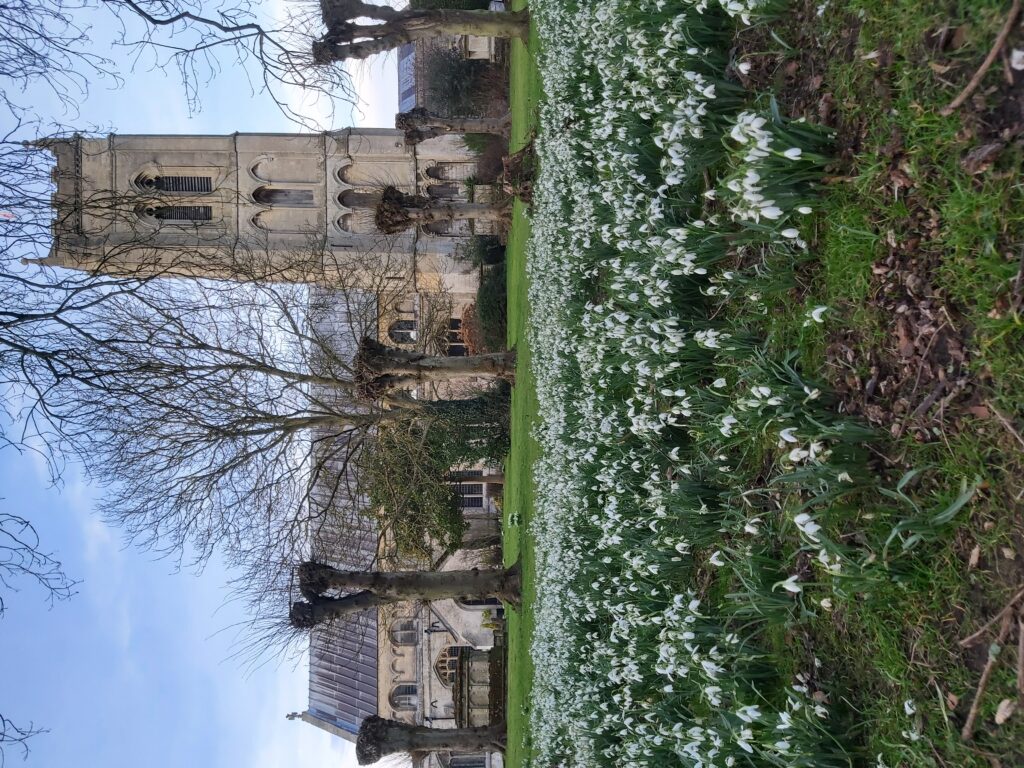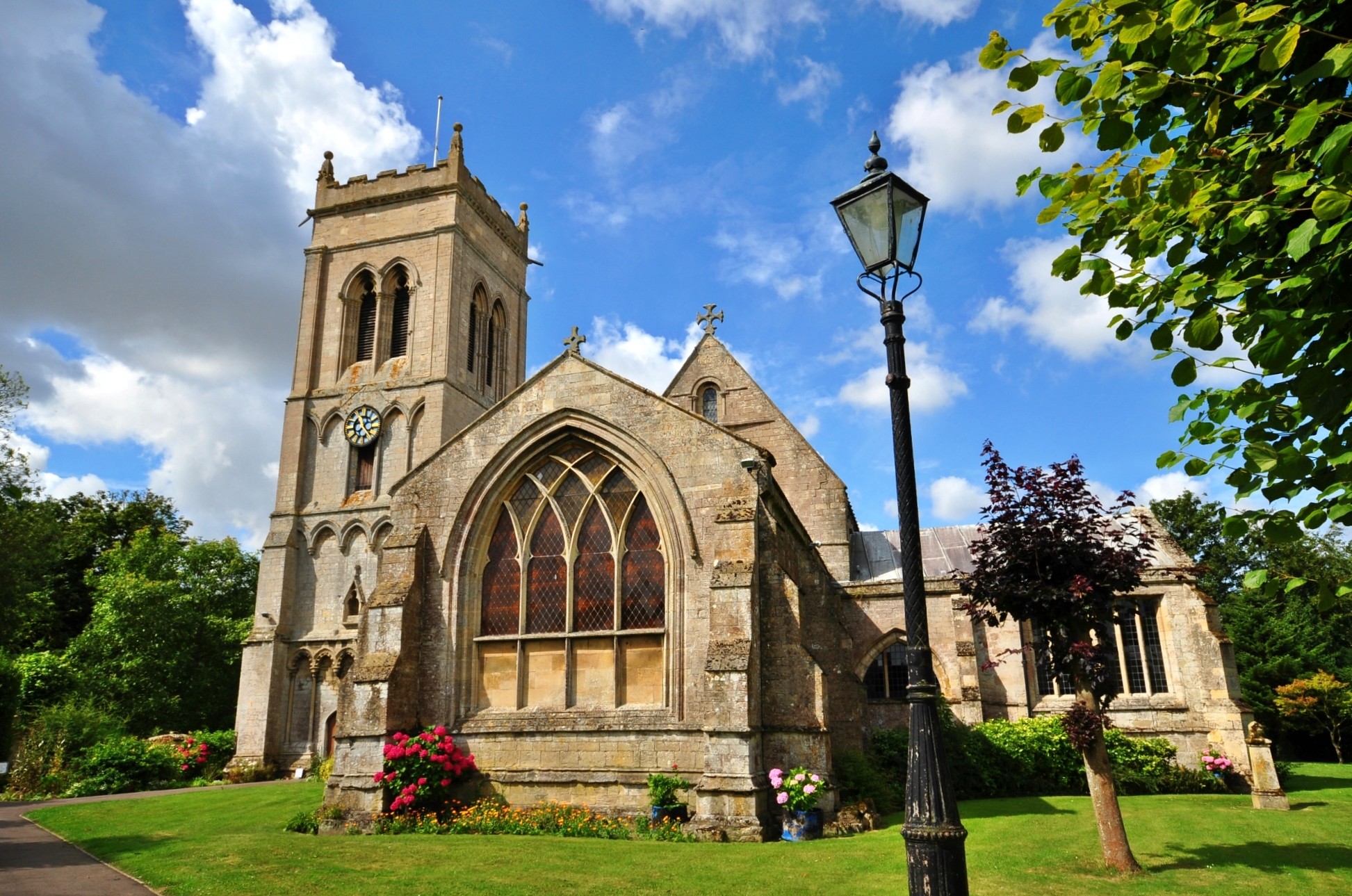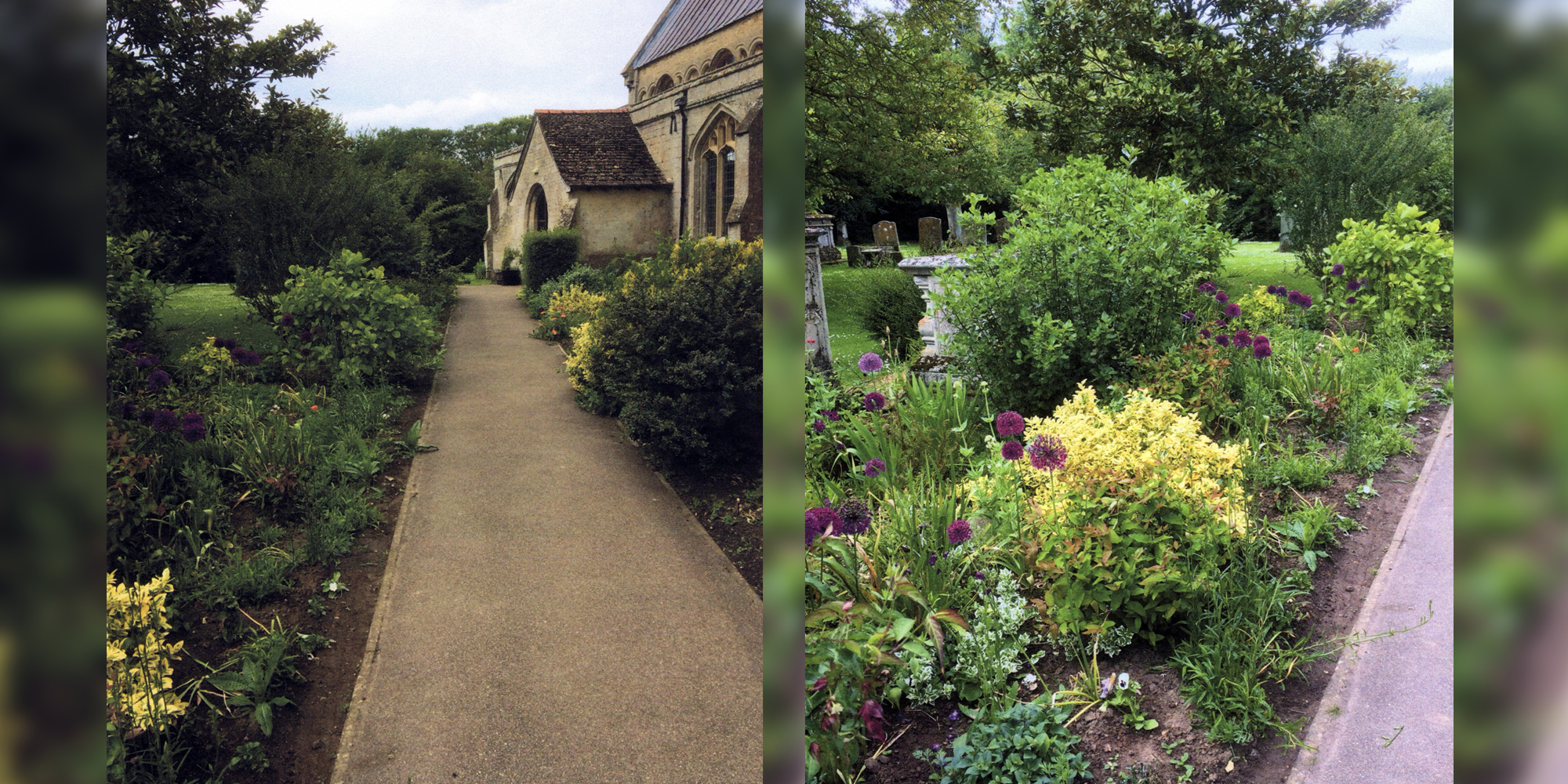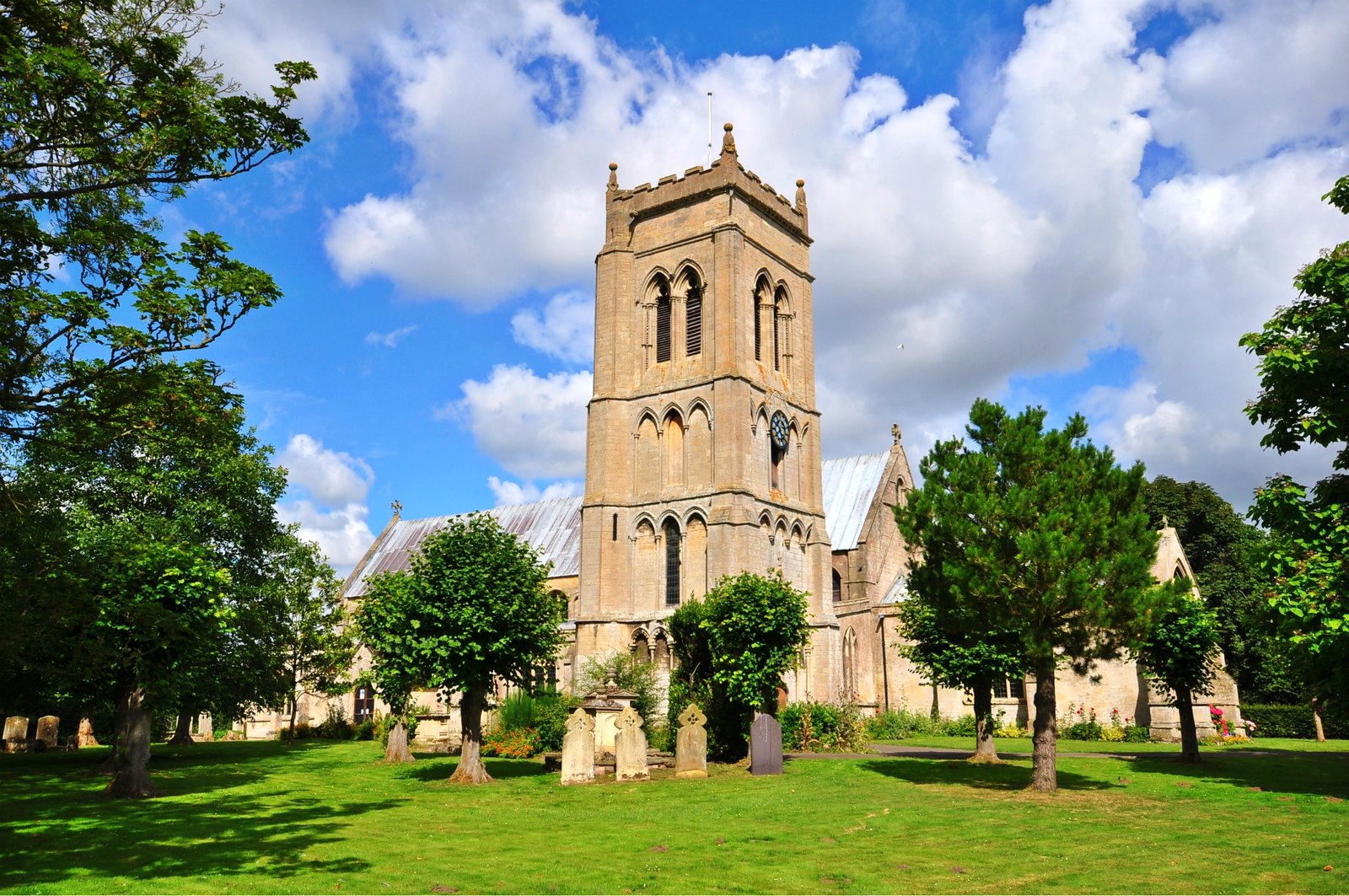
Over three weekends in February St Mary’s hosts visitors from near and far to enjoy the snowdrops in the wooded area adjacent to the churchyard. Although the weather varies between being sunny and inclement, nothing dampens the spirits of those who come to enjoy the flowers and a nice cup of tea and homemade cake in church afterwards.
 In late 2002 a storm felled 5 large horse chestnut trees in the wood by the church. We had noticed in the spring of that year, how many snowdrops were growing there. The collapse of the tree canopy resulted in nettles growing up to 6 feet high, shading everything in the wood.
In late 2002 a storm felled 5 large horse chestnut trees in the wood by the church. We had noticed in the spring of that year, how many snowdrops were growing there. The collapse of the tree canopy resulted in nettles growing up to 6 feet high, shading everything in the wood.
We decided to chop the nettles down and clear the already established pathways.
Over the next 15 years the pathways were increased, fallen trees were used to edge the paths and a yearly covering of bark chippings were put down. Some new trees were needed to replace those lost, grey alder, beech, silver birch, oak, hazel, walnut were planted to fill the gaps.
2010 the snowdrop walk was opened at the weekends in February so the public could view the beautiful snowdrops, refreshments were provided in the Heraldic suite, and provided a new source of income for the church.
In 2018 the Diocesan wanted to sell the new vicarage and the woods. Having found out how important the area was to the village the Diocesan put a fence across the area to separate the woods from the vicarage gardens. A hedge was needed to provide privacy to both areas.
An application was made to the Woodland Trust who provide saplings to worthy causes. We were successful and in the spring of 2019, 90 hedging saplings arrived and 30 trees for other areas. It was suggested the area become known as the Memorial Walk as people can visit any time of the year.
July 2019 three bird boxes were installed, but by August the holes had already been enlarged by the woodpeckers, so we will have to wait and see if we have any birds nesting in the spring.
The area is a beautiful, tranquil space and has many visitors, including wildlife, we hope you will take the time to visit in February to view this wonderful area.
“In discovering the origins of ‘Nut-Walk’ we are thankful to June for passing on the article from the ‘Family Tree Magazine’ 1998, describing how the ‘curate’ Samuel Oliver who in 1811 and earlier, planted at his own expense the following: 300 Gooseberry and currant, and raspberry bushes, plus the following trees, 200 hundred willows, 12 plumb, 6 elms, 10 walnut, ten apple, 7 filbert, 3 pear 3 cherry, 1 Siberian crab and many flowering shrubs, with no financial help from the Vicar. In 1820, he also planted 4 English walnut trees, and American walnut tree, the English trees being designated as the ‘Royal Nut Trees.'” – From June Crawford in the March 2010 Parish Magazine


